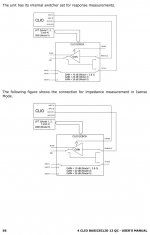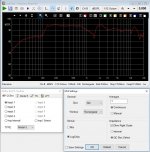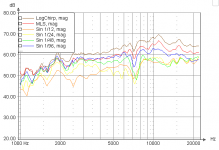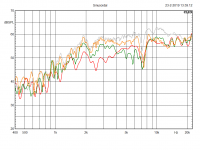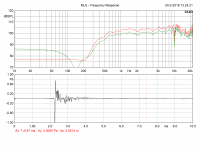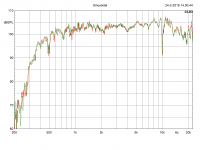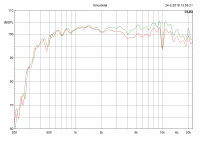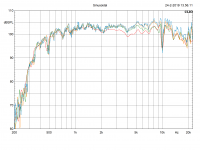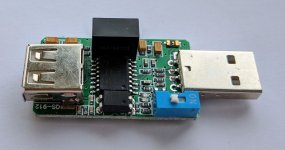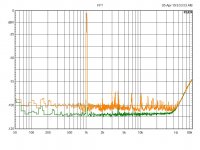Hi again:
I've only been doing international shipping for a couple of years now, but one thing I've learned is that DHL is hand's down the best. USPS, FedEx and UPS, each of which is solid for US shipping drop the ball and loose or damage international shipments regularly in my experience. Another thing the non-DHL shippers do poorly is dealing with import/export restrictions across country boarders. DHL has it down to an art. Or they may be using Mafioso, but it works! 🙂
DHL may be a tad more expensive, but they are so reliable (and fast - 3 days from anywhere in the US to Audiomatica in Florence), that I won't use anyone else. Also, since Italy's import fees are so harsh, Audiomatica makes you declare the value of any shipment to them at $10 USD. That effectively means you have to be able to trust the shipper and I personally have no trouble with shipping stuff with DHL without insurance.
Also, use the smallest shipping box you can that still protects your FW-01. You'll get charged for higher weights if your box is large no matter how light it is.
Crazy sport, but DHL takes the pain out of it. They should send me a discount or something for this sales pitch!
I've only been doing international shipping for a couple of years now, but one thing I've learned is that DHL is hand's down the best. USPS, FedEx and UPS, each of which is solid for US shipping drop the ball and loose or damage international shipments regularly in my experience. Another thing the non-DHL shippers do poorly is dealing with import/export restrictions across country boarders. DHL has it down to an art. Or they may be using Mafioso, but it works! 🙂
DHL may be a tad more expensive, but they are so reliable (and fast - 3 days from anywhere in the US to Audiomatica in Florence), that I won't use anyone else. Also, since Italy's import fees are so harsh, Audiomatica makes you declare the value of any shipment to them at $10 USD. That effectively means you have to be able to trust the shipper and I personally have no trouble with shipping stuff with DHL without insurance.
Also, use the smallest shipping box you can that still protects your FW-01. You'll get charged for higher weights if your box is large no matter how light it is.
Crazy sport, but DHL takes the pain out of it. They should send me a discount or something for this sales pitch!
Thanks again for the reply and the suggestion. I'll use DHL.
And yes, DHL should take care of you!
And yes, DHL should take care of you!
Hi,
I'm a Clio 12 owner and have a question.
How do you guy's get the spl and imp response both on screen?
If I take a imp measurement with input A (isense) and later a spl measurement on input B (mic) the A imp measurement is gone even if I copy it to nr 1
I posted this also in the Clio Pocket thread.
Rob
I'm a Clio 12 owner and have a question.
How do you guy's get the spl and imp response both on screen?
If I take a imp measurement with input A (isense) and later a spl measurement on input B (mic) the A imp measurement is gone even if I copy it to nr 1
I posted this also in the Clio Pocket thread.
Rob
You need a QCBox (not sure if it can be done without it)
Follow the two diagrams from user manual.
Then run the ChB - SPL measurement -> Store as overlay
Then switch to ChA - Ohm measuremnt -> Run... latter will create right axis scale and show you the impedance too.
Follow the two diagrams from user manual.
Then run the ChB - SPL measurement -> Store as overlay
Then switch to ChA - Ohm measuremnt -> Run... latter will create right axis scale and show you the impedance too.
Attachments
You can do it at once using Sinusoidal with CHA connected to mic (dBSPL) and CHB connected to ISENSE of the QCBox. Select Ohm Right Scale in settings. Pls refer to p123 of the user's guide.
You should be able to do the same without QCBox. Just input the correct ISense V/A in CLIO options.
You should be able to do the same without QCBox. Just input the correct ISense V/A in CLIO options.
Difference in measurements
Hi
Did some measurements today from a tweeter al with the same level distance and mic.
There are big differences between LogChirp MLS and Sin 1/12 1/24 1/48 1/96.
The difference are in SPL and frequency curves.
Except LogChirp end MLS there's only dB difference not in freq.
I export all the curves to text and import them into LspCad.
The next picture is from Clio in the Sin measurement.
So which curve can you trust and has the correct SPL.
Rob
Hi
Did some measurements today from a tweeter al with the same level distance and mic.
There are big differences between LogChirp MLS and Sin 1/12 1/24 1/48 1/96.
The difference are in SPL and frequency curves.
Except LogChirp end MLS there's only dB difference not in freq.
I export all the curves to text and import them into LspCad.
The next picture is from Clio in the Sin measurement.
So which curve can you trust and has the correct SPL.
Rob
Attachments
Suggestions from my side are.
A stand alone window for Imp measurements if you save a session then you have all the relevant measurements saved.
If you do a Distortion measurement under the Sin window it should be nice if the measurement stay on top and you could select with checkboxes which curves you wat to see.
A beter implementation of the digital out level setting.
Rob
A stand alone window for Imp measurements if you save a session then you have all the relevant measurements saved.
If you do a Distortion measurement under the Sin window it should be nice if the measurement stay on top and you could select with checkboxes which curves you wat to see.
A beter implementation of the digital out level setting.
Rob
The difference seem larger than they should be. Have you tried loopback measurements? Maybe windowing and some other time conversion stuff is affecting the measurements. On a loopback they should all be the same. I would then insert an analog equalizer and see if you get expected results. otherwise its difficult to know what you are measuring and what is real vs. measurement artifact.
Difference in measurements
1st, try to measure with more power, 60 dB SPL is not so far from room noise level
2nd, use the same diagramm settings X / Y scaling, then you see no huge difference
BR Dirk
1st, try to measure with more power, 60 dB SPL is not so far from room noise level
2nd, use the same diagramm settings X / Y scaling, then you see no huge difference
BR Dirk
Hi Demian,
Don't know how to do loopback measurements.
All the measurements are under the same conditioning.
Dirk the noise floor was below the measurements I checked that ( I forgot to put the mic data in).
I use the same window and scaling with SPL every measurement as you can see in the Clio window.
Rob
Don't know how to do loopback measurements.
All the measurements are under the same conditioning.
Dirk the noise floor was below the measurements I checked that ( I forgot to put the mic data in).
I use the same window and scaling with SPL every measurement as you can see in the Clio window.
Rob
After comments from Dirk I redid some measurements.
The Sinusoidal difference where les with the correct mic input and 100dB spl.
But still there are differences between 1/12 and 1/96 and speed settings.
De differente in speed settings with 1/96 where very small.
Still have the difference in spl between LogChirp and MLS.
Below the pictures.
Picture 1 difference between 1/12 1/24 1/48 and 1/96 speed normal
Picture 2 difference between speed fast and slow 1/12
Picture 3 difference between speed fast and slow 1/96
Picture 4 difference between LogChirp red and MLS green
Rob
The Sinusoidal difference where les with the correct mic input and 100dB spl.
But still there are differences between 1/12 and 1/96 and speed settings.
De differente in speed settings with 1/96 where very small.
Still have the difference in spl between LogChirp and MLS.
Below the pictures.
Picture 1 difference between 1/12 1/24 1/48 and 1/96 speed normal
Picture 2 difference between speed fast and slow 1/12
Picture 3 difference between speed fast and slow 1/96
Picture 4 difference between LogChirp red and MLS green
Rob
Attachments
Last edited:
yes, but i guess the output level of the logchirp sine signal by default is of higher level then for mls. If you loop back the signal and look at them in oscope you should see the same level difference
Hi Celef,
Maybe it is like that but I don't care.
It's a SPL measurement and I should give the right SPL.
So which is the accurate measurement?
I think Clio should fix that.
When you look at the Sinusoidal measurements it's clear that the Logchip measurement is correct.
Maybe it is like that but I don't care.
It's a SPL measurement and I should give the right SPL.
So which is the accurate measurement?
I think Clio should fix that.
When you look at the Sinusoidal measurements it's clear that the Logchip measurement is correct.
The peak to average ratio on MLS is way different from a sine wave. The SPL of the MLS signal of the same peak may be significantly less than the sine level. This may be a source of much confusion.
Hi Celef,
Maybe it is like that but I don't care.
It's a SPL measurement and I should give the right SPL.
So which is the accurate measurement?
I think Clio should fix that.
When you look at the Sinusoidal measurements it's clear that the Logchip measurement is correct.
Yes, but i think the mls lower signal level gives the lower spl reading, just what you would read with a spl-meter, so there is nothing wrong, you simply must increase output level for mls measurements
Hello, gentlemen. I am engaged in the creation of acoustics and setting phase inverters in them. Tell me, will the Clio 12 kit help find patterns in the calculation of phase inverters and confirm them with charts? So far I have focused on the theory of the equality of two peaks in the impedance of a phase inverter acoustics. But I need to prove this theoretically with the help of measurements. For example, is it possible to see any distortions in the pipe setup area using Clio 12? Maybe someone knows how I can be helped in this business by the Klio 12 kit?
I've had a problem with CLIO-12 and QCbox that latter gets some low level interference and whining noises in it's output to speaker when I have both CLIO-12 and QCbox USB cables attached to the PC.
I recently found that there are very cheap USB isolators available in Amazon and even cheaper at AliExpress. Bought one of the latter for 8USD delivered. It was well worth it as evident from graph. Green is with both USB cable connected and this isolator added to the QCbox cable. The orange is without the isolator. As there is no high data traffic on QCbox control the cheapes USB1.1 isolator will do the job.
I recently found that there are very cheap USB isolators available in Amazon and even cheaper at AliExpress. Bought one of the latter for 8USD delivered. It was well worth it as evident from graph. Green is with both USB cable connected and this isolator added to the QCbox cable. The orange is without the isolator. As there is no high data traffic on QCbox control the cheapes USB1.1 isolator will do the job.
Attachments
- Home
- Design & Build
- Equipment & Tools
- CLIO-12
